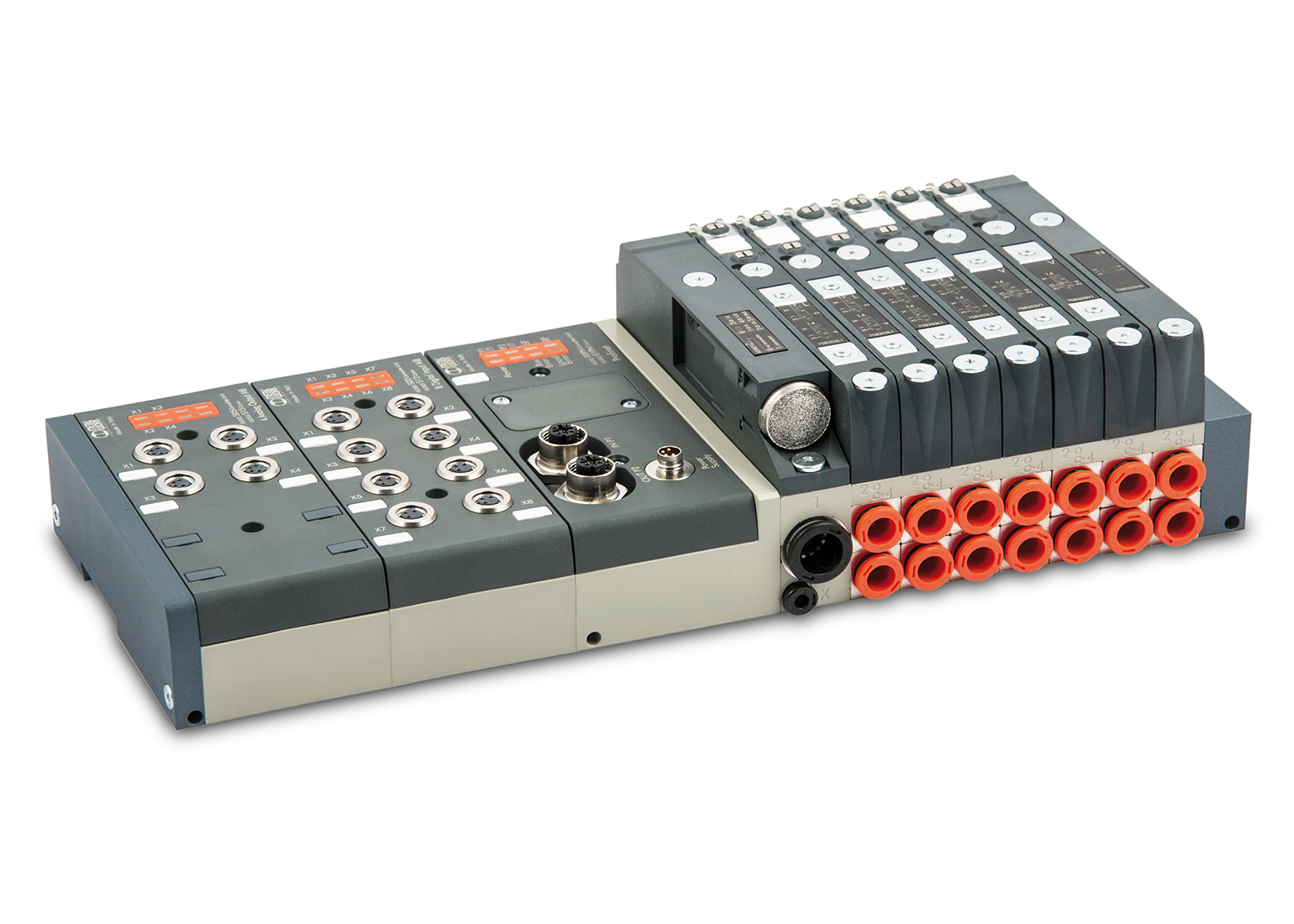EB80, a new approach to solenoid valve islands

EB80, a new approach to solenoid valve islands.
EB80 is a new electro-pneumatic system consisting of one solenoid valve assembly, electric power supplies and input or output digital or analogue signal management.
It is the result of extensive research, which mainly involved the collection of data and requirements from customers and their conversion into solutions. This explains the presentation motto chosen for EB 80: “Driven by customers, designed by Metal Work”.
This article will help make the EB80 module known, by placing more emphasis on the questions that the reader may have, rather than providing a list of characteristics and products in the range.
In our presentation, we first wish to quote a few highlights:
The EB80 can mount solenoid valves performing various pneumatic functions, namely 2/2, 3/2, 5/2 and 5/3, with both electric and manual controls, input pneumatic connections with fittings of up to ø12 on the return circuit and ø4-8mm - but also ø10mm - on the delivery circuit. Flow rate up to 800 Nl/min (ø8) or 1100 Nl/min (ø10). The maximum number of controls for valves is 38 with a multi-pin electrical connection and 128 with a fieldbus connection. The signal control modules with fieldbus can handle up to a maximum of 128 DI+128 DO+40 Al+40I+40AO = 336 signals.
The most innovative solutions are protected by patents and utility models.
But rather than just dry numbers, you are probably interested in knowing more about the system reliability, the management of warehouses and spare parts, the maintenance requirements, compliance with environmental regulations, energy savings, certifications, customisation and examples of applications. An answer to all these issues can be found on our www.metalwork.it/eb80.html website dedicated to EB 80.
Reliability. From our market survey it emerged that the reason why our customers prefer valves mounted on a base, which are easy to disassemble, is because the valves generally break. So we focused our efforts on one objective: the valves MUST not break!
Backed up by 25 years' experience in the production of solenoid valves, we then conducted a Failure Mode and Effect Analysis (FMEA). Here, I'm illustrating, by way of example, some of the design solutions conceived.
The solenoid (coil) is one of the most delicate parts of the valve because it is a miniaturised component whose job it is to ensure the movement of the mobile core in any expected or unexpected situations, with little electric power. A common case is that the power supply, which should be 24V, for example, is for some reason less than that.
The customer sees that the valve does not work and does not know why; he calls for service and discovers that the voltage available was only 18V. This risk does not exist with EB80: the coil is powered at a constant current, NOT with voltage (N.B. the electromagnetic force of the coil is proportional to the current), regardless of the voltage and temperature (electrical resistance changes with temperature, and hence the current would change).
Indeed, the EB 80 has done much more than this: the customer can supply it freely from a minimum of 10.8V to a maximum of 31.2V, hence from 12V -10% to 24V +30%, and smart electronics will ensure that the solenoid is always supplied with the same current.
Let's take another example of a project aimed at improving reliability: the screws fixing the valve to the base are often too small, i.e. M2,5 or M3. An over-enthusiastic operator could easily break them during tightening. The broken shank of the screw remains in the base and removing it is a problem. The EB80 uses special M4 screws with a crosshead, which is virtually impossible to break. Moreover, these are captive screws that do not fall to the ground when replacing the valve.
Reduced number of codes and stocks – warehouse management
The Japanese have taught us that stocks are a muda, i.e. waste.
One of the main objectives to the EB80 project was to provide the maximum number of possible applications with the minimum number of possible products. We feel we have achieved a good result, by cutting down the number of codes by 60%-80% compared to our major competitors. How was it possible?
One size only: all the valve islands from our competitors normally come in 2 or 3 sizes, with valves of different dimensions: a small size with a flow rate of 300-400 Nl/min, sometimes an intermediate size and a larger size with a flow rate of 700-800 Nl/min. The EB 80 comes with one small size with a flow rate of 800 Nl/min – so small size and great performance.
The valves and bases for the EB80 valve can be used with both multi-pin and fieldbus connectors. Moreover, as already mentioned, the same valve can be supplied with both 12V and 24V. Our competitors normally offer bases with a different code, depending on whether it is an electrical fieldbus or a multi-pin control and is powered at 12V or 24V.
Another way to reduce the amount of goods in stock and adapt it to market demand is the possibility of making “last-minute changes”. Do you need to add more valves? You only need to unscrew 3 screws, add an additional base and tighten the screws. Do you need to change the diameter pipe fitting of a base? Cartridge kits are available for diameters 4, 6 and 8mm and 5/32”, 5/16”, 1/4" and can be replaced in 30 seconds. Do you need to replace a Profibus island with the Ethernet? Just unscrew two screws (without disassembling the island!) and change only the upper part of the fieldbus module.
As regards stocks, the 42 Metal Work subsidiaries worldwide, which manage their own spare parts, are equipped to assemble E80 islands on request.
The environment and energy saving
The EB 80 consumes little energy. Load losses are negligible, thanks to the optimisation of flows as the result of FEM analyses and the many tests conducted on 3D prototypes. Electricity for each coil is just 0.18W (yes, just zero point eighteen Watts). Summing up the power absorbed by the LED lights and control electronics input power remains below 0.3W for each valve. Metal Work and EB80 meet the requirements of environmental regulations, namely ISO14000, Rohs, Reach and Conflict minerals.
Maintenance and diagnostics
As mentioned above, the greatest efforts were made with a focus on reducing the risks of failure. But, should a failure occur, it is important to easily identify the defect and replace the faulty component.
The EB80 is equipped with a diagnostic system that explores inside the island and reports the fault in many ways. A general error LED light is provided at the electrical connection module, but there is also an indication of each valve so as to identify the fault without fail. Reported failures include short-circuited, broken or missing solenoid, overvoltage, insufficient voltage, interrupted electric signal transmission. The presence of a fault is relayed to the controller (PLC, CNC), with an indication of the type of failure in the case of a fieldbus connection.
A user interface was developed to facilitate the intervention of operators: all the things to watch and touch are on one side of the island: lights, pneumatic system diagram, item code, manual controls, customisable plate, fixing screws.
Any defective components can be replaced without the need to disassemble the island, by using a crosshead screwdriver – so not only the valves, but also the fieldbus module and the input and output modules. For this feature, the EB80 can easily claim to have optimal “horizontal modularity”, i.e. the possibility of adding or removing valve bases and signal modules and, more importantly, innovative “vertical modularity”, i.e. the possibility of removing the elements vertically without disassembling the island.
Customisation
The EB80 systems can be assembled in endless combinations, just like LEGO! It is up to the customer to opt for a ready-assembled and tested system from one of Metal Work's subsidiaries or assemble it by himself. But there's much more besides: since the technical data are laser-etched on special plates, Metal Work can provide custom valves, with the customer's code and logo, the only requirement being a minimum batch order.
Industry 4.0
The EB80 has come to light to point to the future. When all the winning protocols for the management of so-called “big data” are determined precisely, the microprocessors installed in each valve base will be able to transmit a bulk of information, such as the number of cycles run by each valve, the quantity and type of failure that has occurred over the years and much more besides.
The future
The EB80 has the ambition to grow over the years, by adding new opportunities as the Metal Work research team develops new solutions and customers require new functions. Activities aimed at developing the first (patented) valve to be mounted on a base of just 14mm and a flow rate over 1100 Nl/min have already been implemented. Modules for handling some fieldbus protocols, which are still unavailable, and other solutions will also be developed shortly. Does the reader of this article have a suggestion or a request? Metal Work will be pleased to take it into consideration for the success of this “Driven by customers, designed by Metal Work” product.
The design and documentation of the EB80 was developed on the basis of in-field data and customer requirements.
With the EB80 it has been possible to reduce by 60-80% the number of the components required to satisfy the most varied applications, compared to solutions available on the market. This result was achieved, inter alia, because the EB80 mounts one-size valves of the same dimension as the small valves on the market but of a higher performance.
Great care is taken over modularity and maintenance. Valves, fieldbus modules and signal modules can be replaced with other types or when they are faulty and need to be replaced, without having to disassemble the EB80 system – all by simply using a Phillips-head screwdriver.
The smallest possible system, with 3 valves and multi-polar connection. In theory, the longest can reach 3 metres. The 2D and 3D models can be downloaded from the Metal Work website, thanks to a configurator that guides the creation of the system.
June 2016
Giorgio Guzzoni
Metal Work SpA Product Manager





